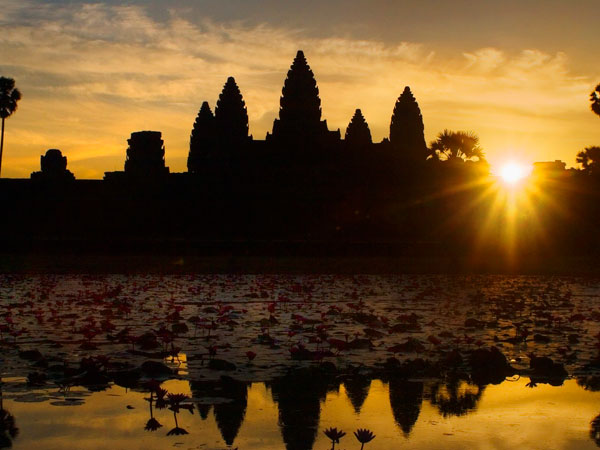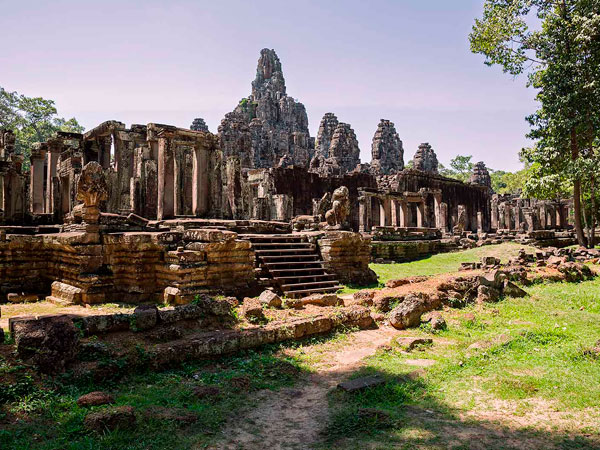Situated about 50km north of Siem Reap, Phnom Kulen National Park is one of the most revered destinations in Cambodia, as it features Kulen Mountain. Once referred to as the Mount Mahendraparvata – the Kulen Mountain is a cultural and historical resort that marked the origin of Khmer empire in the 9th century when King Jayavarman II announced independence from Java and declared himself as the ‘Chakravartin,’ meaning universal king.
Stretching for more than 13km down to the Angkor Plain, the Phnom Kulen is home to a slew of temple ruins and several centuries-old consecrated carvings as well as sculptures. Further, since most of the areas in Phnom Kulen are still untouched, this allows visitors to immerse in the cool, spellbinding attractions that nature itself offers by way of jungle-covered verdant surroundings, rivers and dazzling waterfalls.
Good to Know
Sprawling over an area of about 37,500 hectares, Phnom Kulen National Park is accessible by car, van or tuk tuk, and it takes about two hours to reach here from Siem Reap. The renowned Angkor Wat is about 30km away. There is a private road that leads to the key attractions of the park. However, since the area is not demined, it is advisable to accompany an expert guide as you get deep into the park.
Phnom Kulen National Park
One of the most noteworthy attractions of the park is the archeological site of Kbal Spean. Located in the western region of the Phnom Kulen mountain range, Kbal Spean, alternatively referred to as the ‘River of a Thousand Lingas,’ is a carved sandstone riverbed that has numerous sculptures dating back to the 11th and 12th centuries. The inscriptions and mythological scenes carved out here have been categorized into three factors that illustrate the Hindu Trinity Gods: Lord Vishnu, Lord Brahma and Lord Shiva.
Among the carvings that deserve special note are the engravings of Vishnu reclining on the serpent Ananta with his consort Lakshmi and a lotus flower obtruding from Vishnu’s navel holding the image of Brahma. Once used for baptism, the water in this area is considered sacred. Another attraction worth seeing in Phnom Kulen is Chup Preah – a plain with refreshing streams that meander into the mountain valley. This is truly a serene spot with a big 16th century Buddhist image, in addition to a tree about 15 metres high alongside it.
Equally interesting are Preah Ang Thom – a Buddhist temple that enshrines an enormous 17-metre long statue of a reclining Buddha and the Terrace of Sdach Kamlung – with a small wrecked brick temple at its centre. Studies reveal that this spot was covered by lava for hundreds of years. Aside these, there are two impressive waterfalls that form the focal point of Phnom Kulen.














